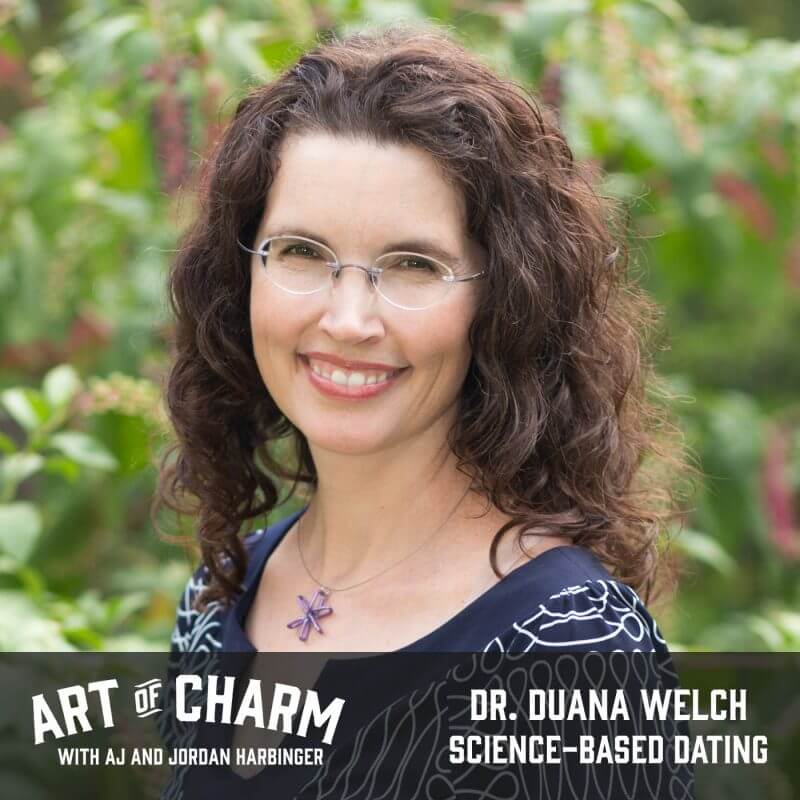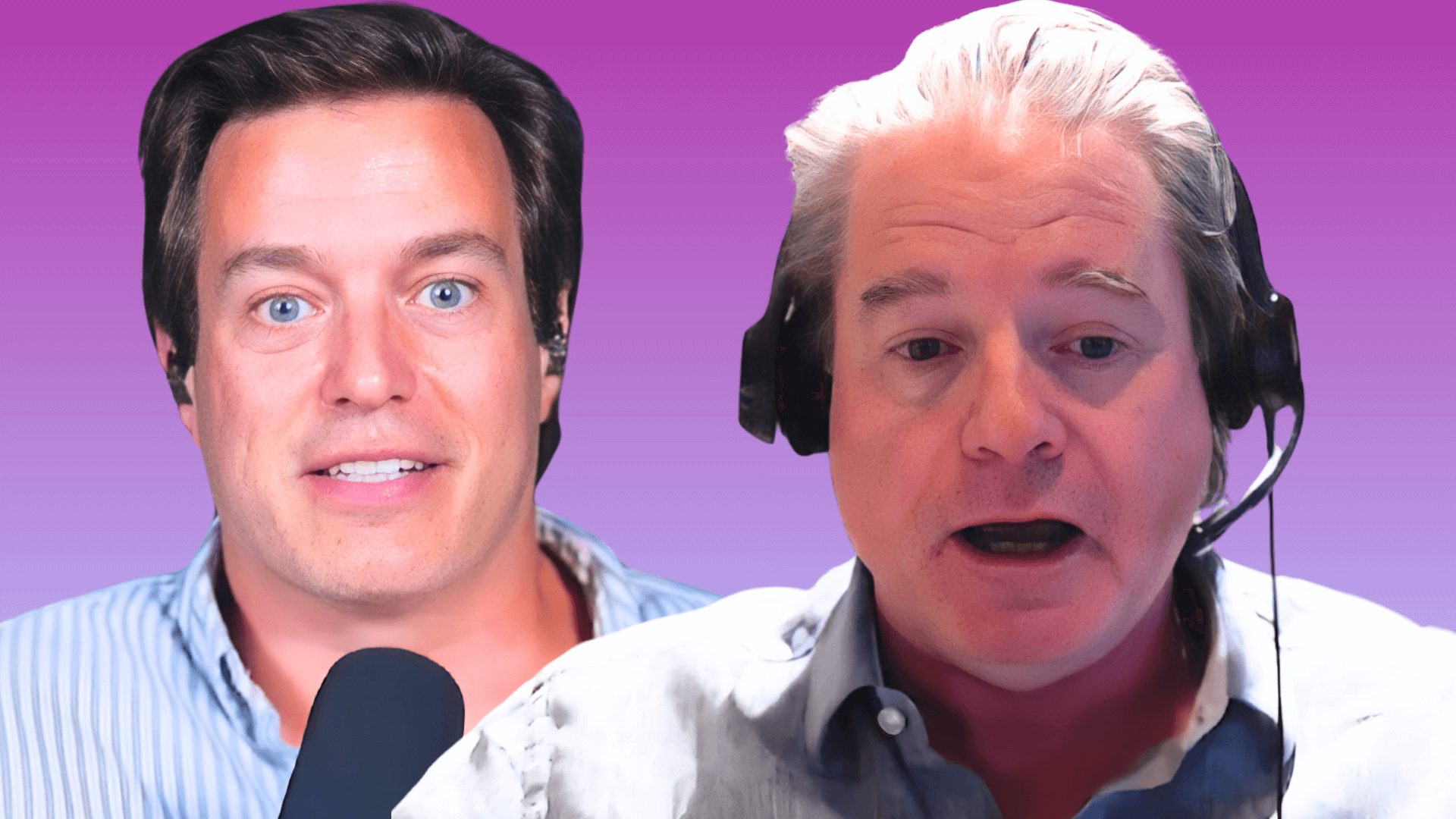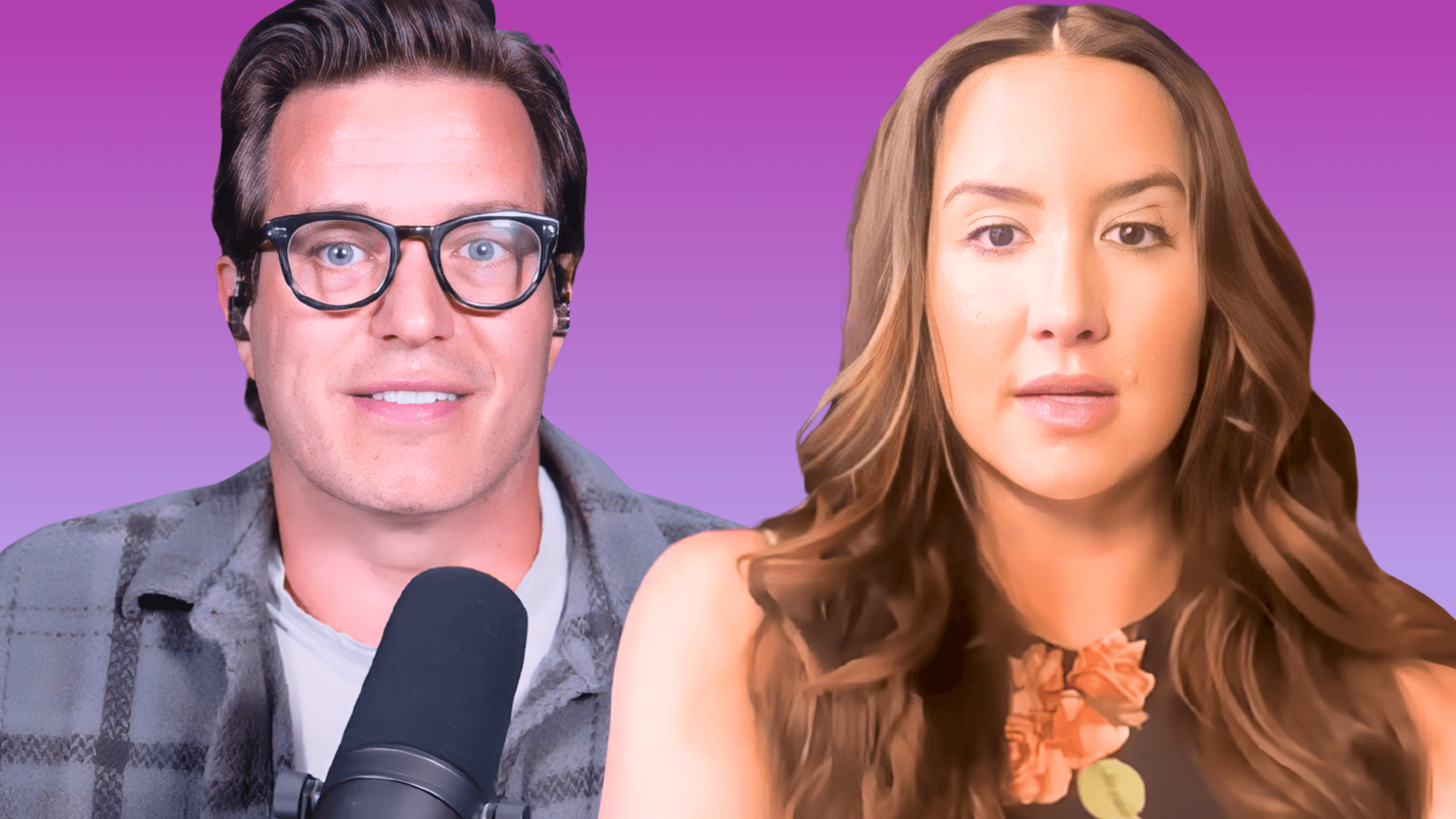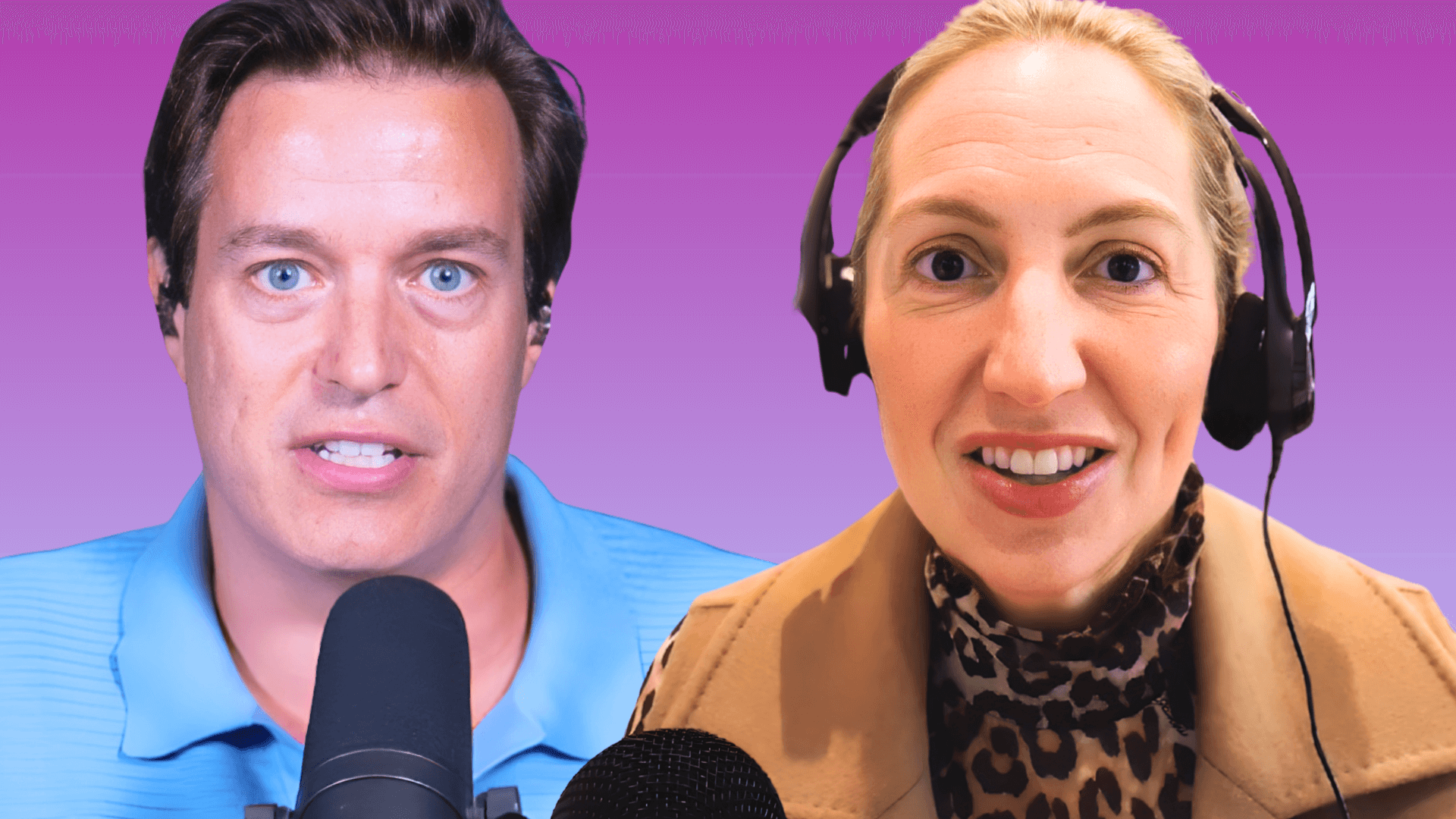Dr. Duana Welch (@duanawelch) is known for applying social science to real-life relationship issues and is the author of Love Factually: 10 Proven Steps from I Wish to I Do, the only book that applies science to your love life from before you meet until you commit.
The Cheat Sheet:
- Learn the four Attachment Styles and what they say about you and your relationships: Secure, Anxious/Ambivalent, Avoidant/Dismissive, and Avoidant/Fearful.
- How can you change your attachment style if you want to, and why do some opposites get attracted even though they’re dead wrong for each other?
- You should be pessimistic about being single instead of being in a relationship because it’s probably going to kill you faster than being in a relationship.
- Married couples live with a much longer time-horizon than cohabiting couples.
- Science is about odds, not about certainty.
- And so much more…
[aoc-subscribe]
Science shows that, much as we think career matters, it’s not nearly as great a source of life satisfaction as having a great partnership. Who you choose, whether you choose at all, and what type of relationship commitment level you choose…they all have great bearing on your happiness, and even on your success in life.
Science can show a pathway toward better relating that leads to better outcomes across the board, from better (and more) sex, to more money at your job. Is there anyone who doesn’t want all that? Dr. Duana Welch, author of Love Factually: 10 Proven Steps from I Wish to I Do, is here to talk to us about love and science on episode 459 of The Art of Charm.
More About This Show
Dr. Duana Welch began her career as a social scientist by applying her research techniques to memory and aging. But as someone who confesses to being less than effective with dating in her early to mid-twenties, it took a difficult breakup to set her on her current course: applying those research techniques to romantic relationships.
“It finally occurred to me in the middle of a really awful breakup that maybe there were some social scientists who had studied this kind of stuff,” Duana says. “And in fact there were a lot of them that I’d never heard of because at the time, all this stuff was in scientific journal articles and I wasn’t in that field, so I wasn’t reading those journals. And it wasn’t being publicized at all. So I started amassing and accumulating these studies and applying them to my own life and seeing good results and ultimately, that culminated in my blog and my book.”
From her research that continues the work of social scientists like Cindy Hazan, Phillip Shaver, and Kim Bartholomew, Duana finds that we all exhibit a certain attachment style — a habitual way of behaving in a relationship with an intimate partner or with people we’re close to. There are four attachment styles; even if you think yours is a combination of two or more, just pick one you tend toward by answering in the way that seems most natural:
A) I find it relatively easy to get close to others. I am comfortable depending on them and having them depend on me. I don’t often worry about being abandoned or about someone getting too close to me.
B) I find that others are reluctant to get as close as I would like. I worry that my partner doesn’t really love me or won’t want to stay with me. I want to merge completely with another person, and this desire sometimes scares people away.
C) I am uncomfortable getting close to others. I want emotionally close relationships, but I find it difficult to trust others completely or to depend on them. I worry that I will be hurt if I allow myself to become too close to others.
D) I’m comfortable without close emotional relationships. It is very important to me to feel independent and self-sufficient, and I prefer not to depend on others or have others depend on me.
Were you able to match one of the above attachment styles to yourself? Duana says that most of us wind up with a certain attachment style based on how we were cared for as infants and who we connected with during these early interactions — which usually defaults to our mothers, though exceptions aren’t uncommon.
“What’s interesting is most of us have the same attachment style our mother has,” says Duana. “So this, apparently, is passed down from generation to generation. It’s partially genetically mediated, and it’s partially caused by parenting styles; parenting styles can overcome the genetic component of it.”
So we all have attachment styles, and Duana says that 2/3rds of us retain the one we picked up as infants. But what do we do when we’re not satisfied with the attachment style we’ve been stuck with? The first step is identifying it, as we did above — and as Duana did as she was just beginning her research.
“What I found out was I had a very disappointing attachment style — at least it was very disappointing for me,” says Duana. “I was not an A.”
If you were able to identify with the A statement above, then — like about 70 percent of people — you have a Secure attachment style. This is what Duana realized she was striving for.
If you were able to identify with B, C, or D, then you likely possess one of the Non-secure attachment styles, which include their own variations that determine how your relationships tend to map out. They can predict not only how you’ll behave in a relationship, but how your partner in a relationship will react — or, as Duana says, “B, C, and D all sabotage their relationships; they just do it in different ways.”
Style B is the Anxious/Ambivalent style, which is what Duana discovered as hers during the original assessment. “Those of us Anxious people tend to really, really yearn for complete bonding and closeness with another person,” Duana says, “but we’re so worried that the other person is not into us or that the other person is going to abandon us, that ironically, some people with this style actually do the number one thing that social science indicates will get you abandoned: they find a backup partner. They have an affair.”
“That’s not really helpful or adaptive for them,” she continues. “I will say the vast majority of people with an Anxious style don’t have an affair; they don’t get a partner on the side, but they do tend to scare themselves needlessly and do what I call, ‘I’m going to push you away, because otherwise you’ll push me away — so I’m going to leave you before you can leave me.'”
Style C and D are both variations of a style called Avoidant — a confusing name Duana confesses she would have chosen differently if she’d been in charge. “Avoidant sounds like these people are not looking for a relationship — as if they’re literally avoiding it,” says Duana, “and that’s not what it means. Evolution pretty much all but got rid of the people who don’t want any level of relationship. Even if you look at studies on asexual people, they still want a relationship.”
“So Avoidants want a relationship — but they have it in a way that keeps everyone at arm’s length. So here’s this Secure person who is neither too hot [nor] too cold — just right. Like Goldilocks finding the soup. Then there’s the Anxious person who clings too tightly or may run away prematurely because they’re worried you won’t stick with them. And then there are the Avoidant people.”
(Incidentally, women are more likely to be Anxious; men are more likely to be Avoidant.)
Behavioral markers of an Avoidant might typically include getting up and leaving immediately after sex (even within marriage), avoiding emotional discussions, avoiding physical intimacy except for sexual intercourse, having sex in such a way that it’s very perfunctory and avoids eye contact. And then you have less typical cases.
“I knew a guy who was extremely Avoidant,” says Duana, “who did get married, but insisted on taking separate vacations from his mate and actually got a vasectomy without telling her.”
Style C people fall into the Avoidant/Fearful camp. “They fear other people needing them too much,” Duana says. “Yes, I want a relationship, but as soon as I detect that you’re needing me, it feels like ankle weights and I feel like running away. So I just hold you at arm’s length so I can control my fear.”
Style D people are Avoidant/Dismissive. “These folks tend to have a series of relationships where they don’t allow themselves to get emotionally invested almost at all because they really don’t value emotional closeness,” says Duana. “They value independence, and they see the two as mutually exclusive — which is fascinating to me because science shows that you wind up with such better outcomes if you can embrace interdependence, and you wind up with a lot worse outcomes in health and happiness and sex life and career progress in lots and lots of ways if you don’t manage to get and keep a stable relationship.”
Listen to this episode of The Art of Charm to find out why cultivating an attachment style that promotes interdependence plays a key role in positive mental as well as physical health, how science weighs in on the whole “opposites attract” maxim, why love gives many of us a reason for living (even if it doesn’t conquer all), what happens when different attachment styles mix, and — perhaps most important — how we can make the change from a B, C, or D attachment style to A.
THANKS, DR. DUANA WELCH!
Resources from this episode:
Love Factually by Duana Welch
You’ll also like:
On your phone? Click here to write us a well-deserved iTunes review and help us outrank the riffraff!




